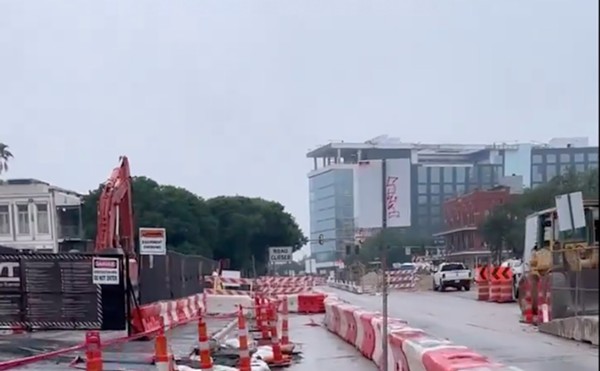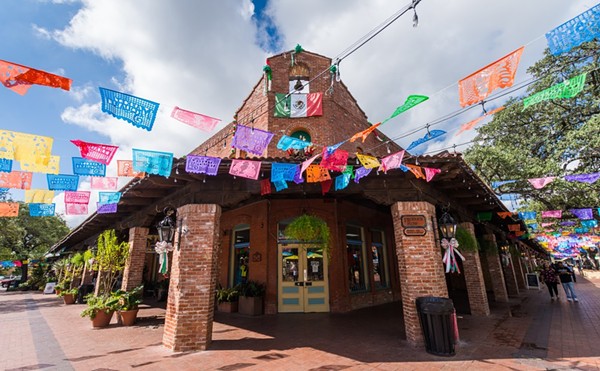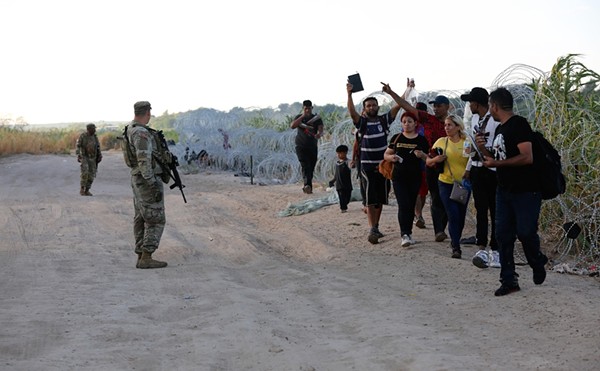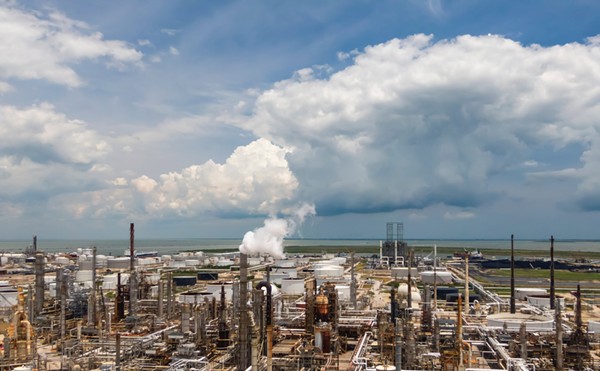The key findings of international scientists on climate change have been startling enough, but somehow having them tailor cut to our pasture made the matter more immediate.
When I consider what increased climate volatility means for the region’s many poor residents, I think, ‘Why in the hell aren’t we equipping these communities with decentralized power? With solar? With wind?’ I take to heart predictions of a potential oil crash. I listen when science says seven-degree increases in average temperatures. Same for flooding and drought, from our dear Aggies.
We are already living in a “climate vulnerable” part of the world (vocab courtesy of A&M’s finest).What will stability cost? Each day we fail to plan, that fee rises.
I refuse the arguments that clean coal or nukes will save us.
Community gardening initiatives, roof water catchments, local power generation, more closely knit communities: this is what my reading of some leaked chapters suggests.
So, show up tomorrow in Kingsville and get yourself a free clarion call, likely embedded with plenty of line graphs. After that, availability is vague. Barnes y Noble, I hear. Or from the university (I have yet to get a contact for sales, but I will update this post as that becomes available.)
`PRESS RELEASE FROM TEXAS A&M, KINGSVILLE, BELOW`
‘20-YEAR-OLDS NEED TO KNOW THEY’RE GOING TO GROW UP IN A WARMER WORLD’
New book projects effects of global warming to year 2100
Co-editors host book-signing Jan. 23 at A&M-Kingsville bookstore; free books for first 50 attendees
KINGSVILLE, Texas (January 15, 2008) – More frequent heat waves in summer. Fewer hard freezes in winter. More prolonged periods of drought. Worsening air quality. More extreme individual rainfall events.
That’s the forecast predicted for the year 2100 in South Texas – a region already known for its unforgiving climate – in The Changing Climate of South Texas 1900-2100: Problems and Prospects, Impacts and Implications. Co-edited by two research professors at Texas A&M University-Kingsville, the book features chapters written by leading scholarly authorities on the effects of climate change on the region’s coastal areas, water resources, air quality, ecology and wildlife.
Texas A&M-Kingsville’s Regents professor of geography Dr. James Norwine and Frank H. Dotterweich College of Engineering associate dean Dr. Kuruvilla John co-edit the book and will host a book-signing at the Barnes & Noble University Bookstore, located in the Memorial Student Union Building on Santa Gertrudis Avenue at University Boulevard, from noon to 1 p.m., Wednesday, Jan. 23. The first 50 people to attend will each receive a free book.
A century from now, South Texas will experience the type of climate change that would occur if the entire region were moved 100 miles to the southwest, becoming both more tropical and more arid. “There’s not a lot of fudge factor in the numbers,” said Norwine. “Those who are 20 years old need to know they’re going to grow up in a warmer world. People can take that to the bank.”
He also stresses the book’s objective and scientific approach. “Readers get a fair, understandable depiction of the most current scientific climate data about our area,” he said. “We also are clear in categorizing our predictions as hypotheses, noting those in some areas that are untested.”
Norwine and John call climate change “…a regional challenge which we believe is the greatest test South Texas has faced since its first human inhabitants arrived ten or so millennia ago.” The co-editors and authors use the latest climate data to sketch an outline of what the South Texas region will look like as the 22nd century begins:
* The water supply will be reduced, even as the population of the region continues to grow, creating greater demand on municipalities and other water-providing agencies.
* The sea level will rise along the coastline, flooding the region’s salt marshes and leading to changes in the ecosystem of the region.
* Changes in wildlife – mammals, birds and amphibians – will be volatile; some animals will be able to cope with the changing conditions and some will not, and no current model exists to predict which will and won’t.
* Because climate change is expected to occur due to an anticipated growth in global emissions, the injurious effects on regional and urban air quality will intensify.
* Long-term climate change will exacerbate the effects of urbanization as population grows; for example, paving open land leads to an increase in the amount of rainfall runoff and flooding.
* The region’s agricultural industry will increase its demand on the water supply by more than 50 percent.
* There will be a rapid northward and eastward shift in the breeding ranges of several tropical, subtropical and warm desert bird species.
* Future weather and climate extremes – hurricanes, droughts, heat waves and others – will intersect with the region’s vulnerable ecologies to create future megadisasters, and leaders at all levels of governance are underestimating the growing fragility of the region and failing to enhance existing methods of regional sustainability.
The book concludes with a “Letter to a Young Reader,” in which the co-editors note that the volume’s lack of proposed solutions was by design: “There is a place for advocacy but this is not that place. … Our job was to describe and explain the challenge … It is up to the present and next generation of citizens and leaders to ‘come and take it,’ `the challenge issued by Texas colonists to Mexican authorities when ordered to relinquish their cannon at the 1835 Battle of Gonzales` We are confident that they, you, will do so.”
Norwine first considered the book after he and collaborator Claudia Tebaldi of the National Center for Atmospheric Research made a climate model for South Texas, using past temperatures, pollutant levels and other pieces of information to determine what the area’s environment might be like in 100 years. The results echoed research findings of the 1990s from James E. Hansen, director of NASA’s Goddard Institute for Space Studies. Hansen developed a climate model for Houston that showed the city changing to an essentially tropical climate by about 2050 if carbon dioxide levels continued to rise as they had been since the late 18th century. The changes experience in such a scenario include night temperatures of 80 degrees or higher for three months each year; many years, even decades, with no significant freezes; higher energy use; and more heat-related health problems.
“Even if Hansen is only half right, it moves us in a direction that is worrisome,” said Norwine.
Contributors include Dr. Ralph Bingham, Dr. Jhumoor Biswas, Dr. Leonard Brennan, Dr. Kim Jones, Gomathishankar Parvathinathan, Dr. Venkatesh Uddameri, Irama Wesselman and Dr. Jaehyung Yu, all of Texas A&M-Kingsville; Dr. Gene Blacklock of the Coastal Bend Bays and Estuaries Program; Dr. James Gibeaut of The University of Texas at Austin; Dr. Robert Harriss of the Houston Advanced Research Center; Dr. Paul Montagna and Dr. John Tunnell Jr., both of Texas A&M University-Corpus Christi; Dr. Gerald North of Texas A&M University; Dr. John Rappole of the Smithsonian Zoological Park Conservation and Research Center; and Dr. Claudia Tebaldi of the National Center for Atmospheric Research.
Publication of The Changing Climate of South Texas 1900-2100: Problems and Prospects, Impacts and Implications is sponsored by A&M-Kingsville’s CREST-RESSACA, the Center of Research Excellence in Science and Technology-Research on Environmental Sustainability of Semi-Arid Coastal Areas which is funded by the National Science Foundation.


















